I have had a lot of interest from readers and friends about our experience with Saskatraz bees. I wrote an article here about my experience with this new race of bee after we had raised them for one year, and it has generated a lot of interest and questions. Right off the bat, I will tell you that Saskatraz bees have done better than any race I have raised thus far.
As you may know from my previous posts, I have had experience raising several bee races, including Carnolioan, Russian, Italian, and Saskatraz, most recently however, I had switched to solely Russian and Saskatraz. This article is an update regarding how these bees have done this past year, now that I am two years in.
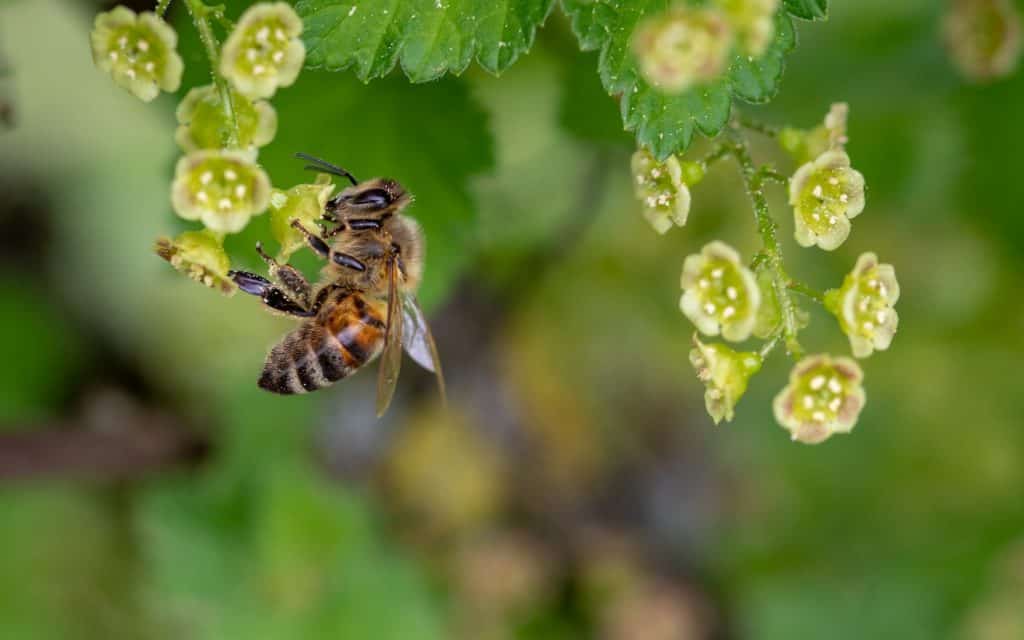
Both my Russian and Saskatraz colonies were doing fine until we had a cold snap in early Spring. The temperatures had warmed up for a good week or two, but then plummeted overnight to below freezing, and stayed that way for about a week. Sadly, the Russians died, which surprised me because they had done really well all winter long. This happened with both of our hive locations, and upon investigation I believe they froze.
Within a few weeks of the Russian hives dying however, the Saskatraz bees at one location had split, and taken over the previous Russian hive.
Meanwhile, a close friend had requested that I establish an apiary on his property, so I had ordered additional bee packages for him. From the previous Fall’s harvest, and because of how well they were doing during the winter, I had ordered both Russian and Saskatraz races again. So, now, I have multiple Saskatraz and Russian hives.
It has been illuminating to observe and compare the development of both Russians and Saskatraz colonies side by side, and compare the two. I will be equally interested to see which hives will produce the most, and best quality of honey this Fall……I will definitely keep you posted as this happens.
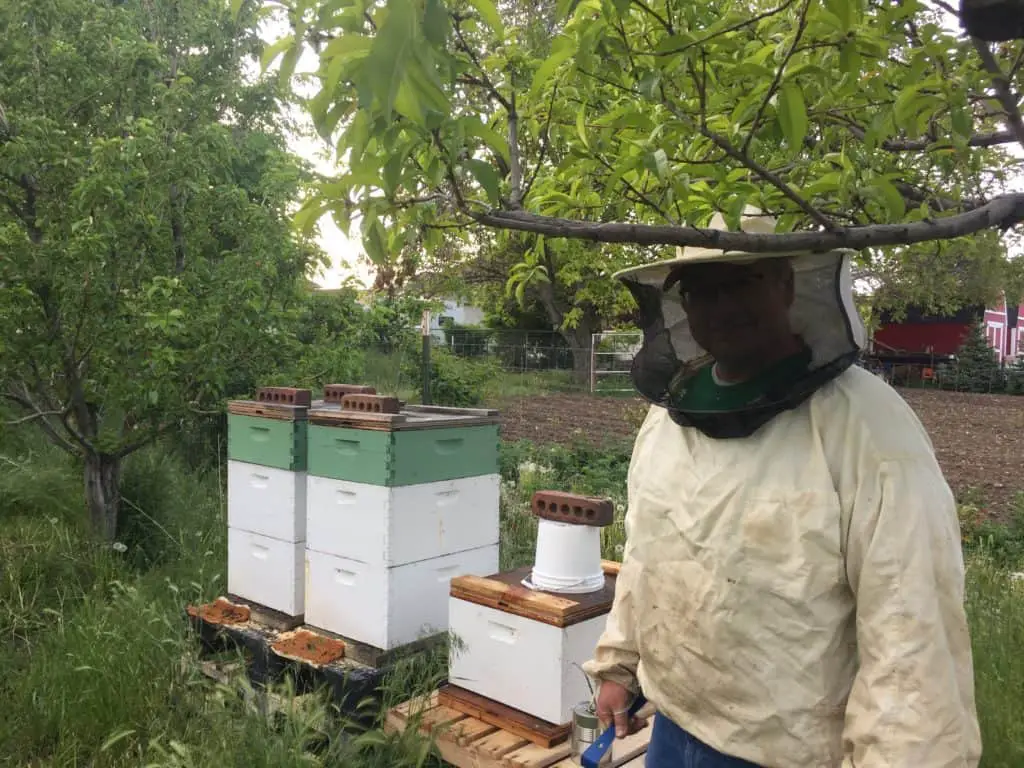
We installed our additional bee packages (bought from a local distributor of Olivarez Honey Bees) in early spring, and are about 6 weeks in. Thus far, the comparison of the Russians and Saskatraz has been fascinating, and the Saskatraz have by far outperformed the Russians.
We have used Langford-style hives with ten frames in each deep super, and the frames of the Saskatraz bees were filled out with combs and several frames even had capped honey. The Russians hives however, though healthy, had only filled out 6 ½ -7 frames per super with comb.
You can watch a video of one of our early summer hive inspections to see whether we needed to add another super here (video will be uploaded later this week). (To establish a strong hive, it is always recommended that you use at least two deep supers to support the colony). As you can see in the video, both the Russian and the Saskatraz bees were ready for additional supers, however, the Saskatraz hives were outperforming the Russians.
The Saskatraz bees were more active. They had built out more comb, more bees were noticable, and the energy level of the hive was visibly higher than the Russians. Interestingly, both hives have acted similarly gentle in temperament as we have checked on them during the summer. (We’ll see if this continues when it comes time to harvest).
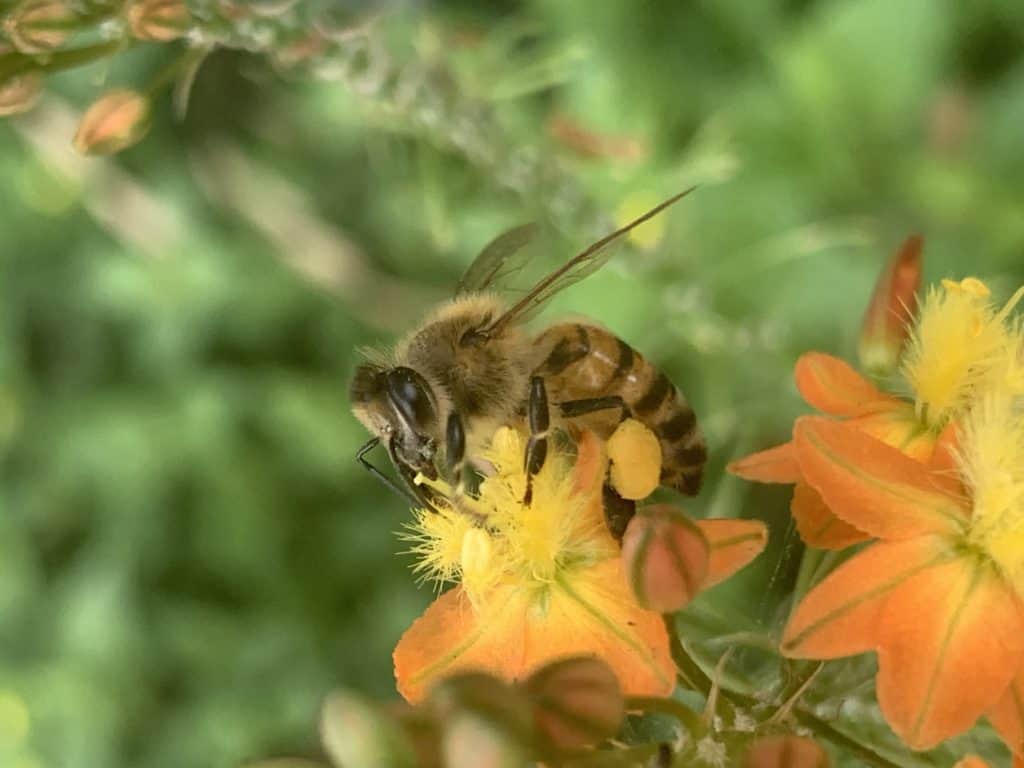
One thing to learn from our inspection, and you will want to be aware of, is that your hives may become honey bound. Which means, that your hives will grow out of room to store honey, brood, bee bread, or to expand the colony. If this happens, it can hamper the health of your hive. Some races will swarm, and some colonies will be lost or become overly aggressive. This will also limit your productivity. To avoid this problem, or treat a honey bound hive, you can expand it, add a super, or pull honey early.
If you have the time and resources, I would recommend you pull the honey when you can. We actually will add another deep super to give the colony more room to grow as needed. With an initial colony, you will generally only need to inspect them every 11-14 days, but with the Saskatraz race, it may warrant checking weekly, because they seem to be very productive. (If you are using medium supers you may need to check more often, as medium supers are smaller, and will fill up faster). We have written another article about honey bound hives “here”.
If you are going to start with a Saskatraz hive, I would recommend using deep supers because of their productivity. If you are using medium supers, you may be more likely to find your colonies becoming honeybound.
The second thing I am going to recommend with Saskatraz bees is that you inspect them more often. As mentioned above, because your supers may fill up faster, you will want to stay on top of where your hives are production-wise.
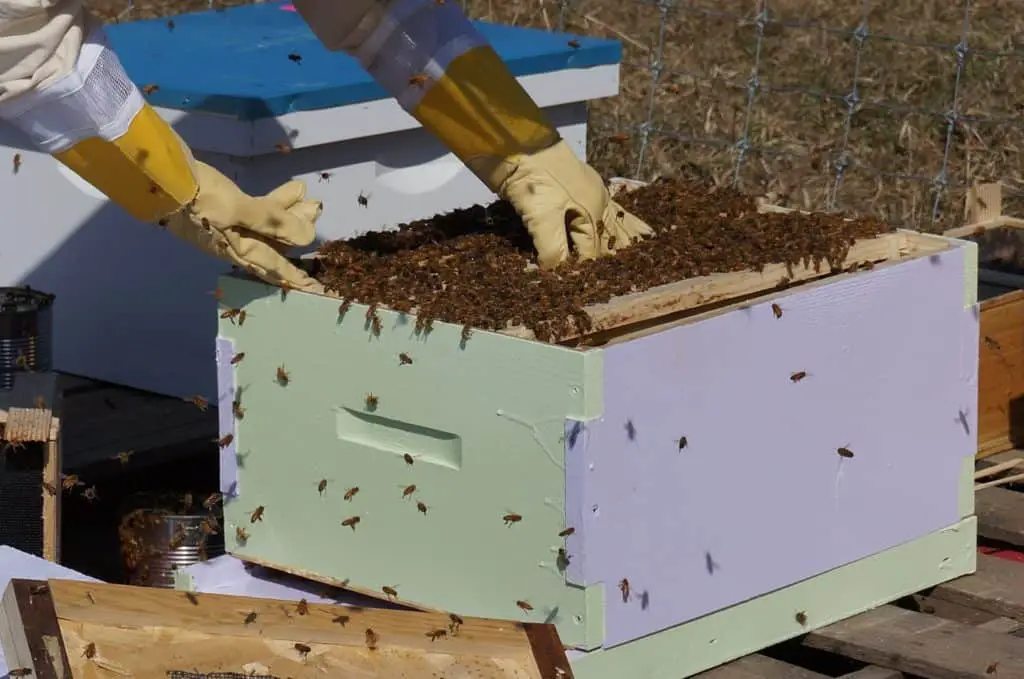
I would also note that the energy level of the Saskatraz bees is visibly higher than other breeds I’ve worked with, so you will want to keep this in mind as you decide where to establish a hive. Though not overly aggressive, this energy and excess movement may spook livestock or larger animals. Additionally, your human neighbors are more likely to notice these bees than other breeds. The Saskatraz colony seems to have a higher traffic rate, and will attract more attention.
Because of this energy level, I think that the Saskatraz race would be exceptional solution to use as contract pollinators. (Bees that are rented out by farms and food growers to pollinate their crop) such as the almond and blueberry farmers in California and other locations.) You can read more about contract pollination here in this forum from beemaster.com.
One other thing I think is worth mentioning, is that I was warned when I purchased the Saskatraz bees that they were prone to swarming, and I was going to take precautions against this. I had planned on inpesecting them early in the Spring to guard against this, but as I mentioned, my Saskatraz colony had already split and taken over the old Russian hive. I wonder, if they hadn’t had access to the Russian hive, if they would have swarmed. And I would have lost them. It is worth noting, as you will want to take your own measures to prevent swarming if this truly is something in the Saskatraz nature. You can read about swarm prevention in this article.
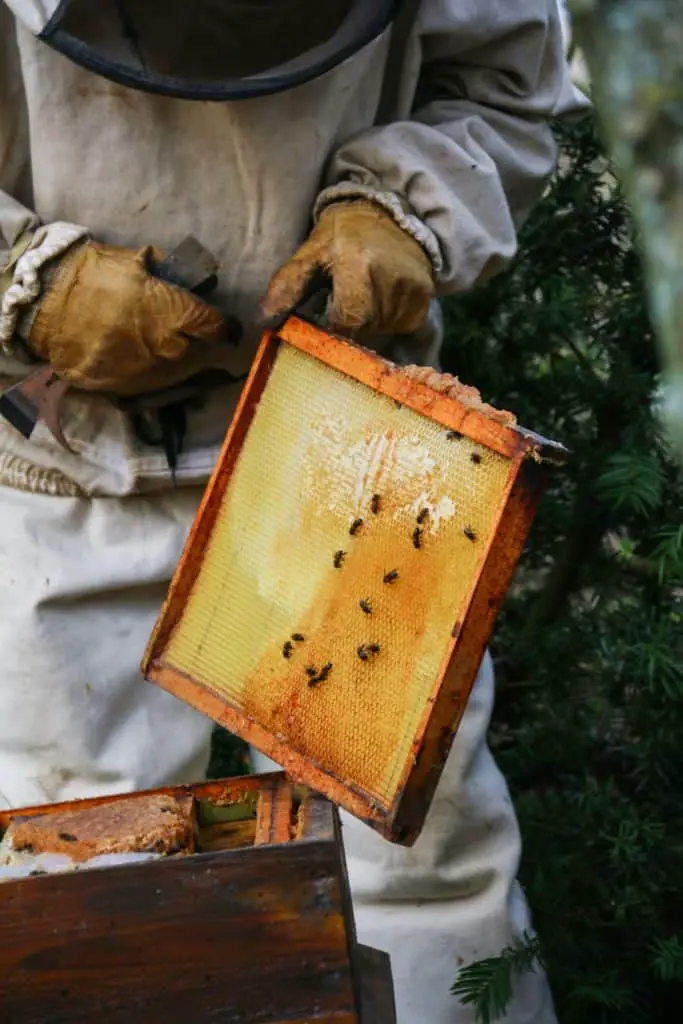
Getting back to my bees…..upon our initial inspection, just like the previous year, the Saskatraz bees had built more propolis in the hive itself, (as compared to the Russians and any other race I’ve worked with, including Italian and Carnolian) and according to this article, propolis is essential to hive health and resistance to bacteria, viruses, mites and other things that may harm bees.
Another question we have been asked, has been regarding how our Saskatraz bees did during the winter. From our experience, the Saskatraz did well. They covered the upper hive entrance with propolis entirely. Whereas, our Russian hive only half covered the top entrance with propolis. The Saskatraz bees appeared to be more proactive in protecting and preserving their hive. All outward inspections revealed a healthy buzz throughout the winter, and I checked them (exteriorly) every week.
This winter on our homestead was exceptionally cold and wet, with some sub-zero days, and warm days interspersed. It was a heavier precipitation (snow year) than we’ve had in years. We also experienced a great deal of inversion, or air trappage, which I think can affect bees as well.
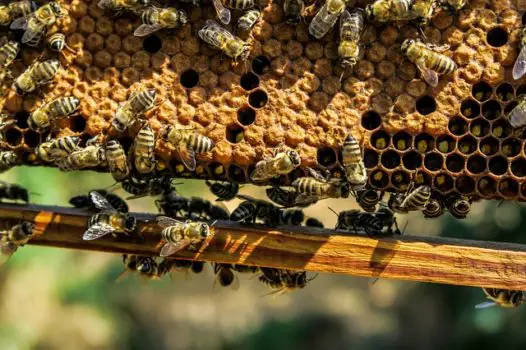
When it was warm enough, (above 42 degrees) I also observed the Saskatraz bees making various cleansing flights as expected. Incredibly, I actually watched them gathering what appeared to be pollen from unknown sources (perhaps a greenhouse or evergreen trees) during the warm winter days as well. Perhaps this was fungus, or tree sap, but they were actively gathering something.
We have talked a lot about the new packages of Saskatraz bees I installed this spring, but as I spoke of earlier, I installed new packages because I was impressed with the colonies that I started over a year ago. Of the two hives I started over a year ago, both are thriving. Their energy levels are high. They are incredibly resourceful, and I have observed these bees taking many gathering flights in and out of their respective hives. They aren’t aggressive towards others, or defensively, but they are aggressive workers. As mentioned above, when my Russian hives died after a cold snap, the Saskatraz bees took over their supers within a matter or weeks. You can watch a video here (video will be uploaded this week), of one of my inspections of the older Saskatraz hives and see for yourself how well they are doing.
Regardless, I hope this information is helpful to you as you continue your own adventures in beekeeping, and look into trying the Saskatraz race. Please feel free to contact me if you have any questions about them.

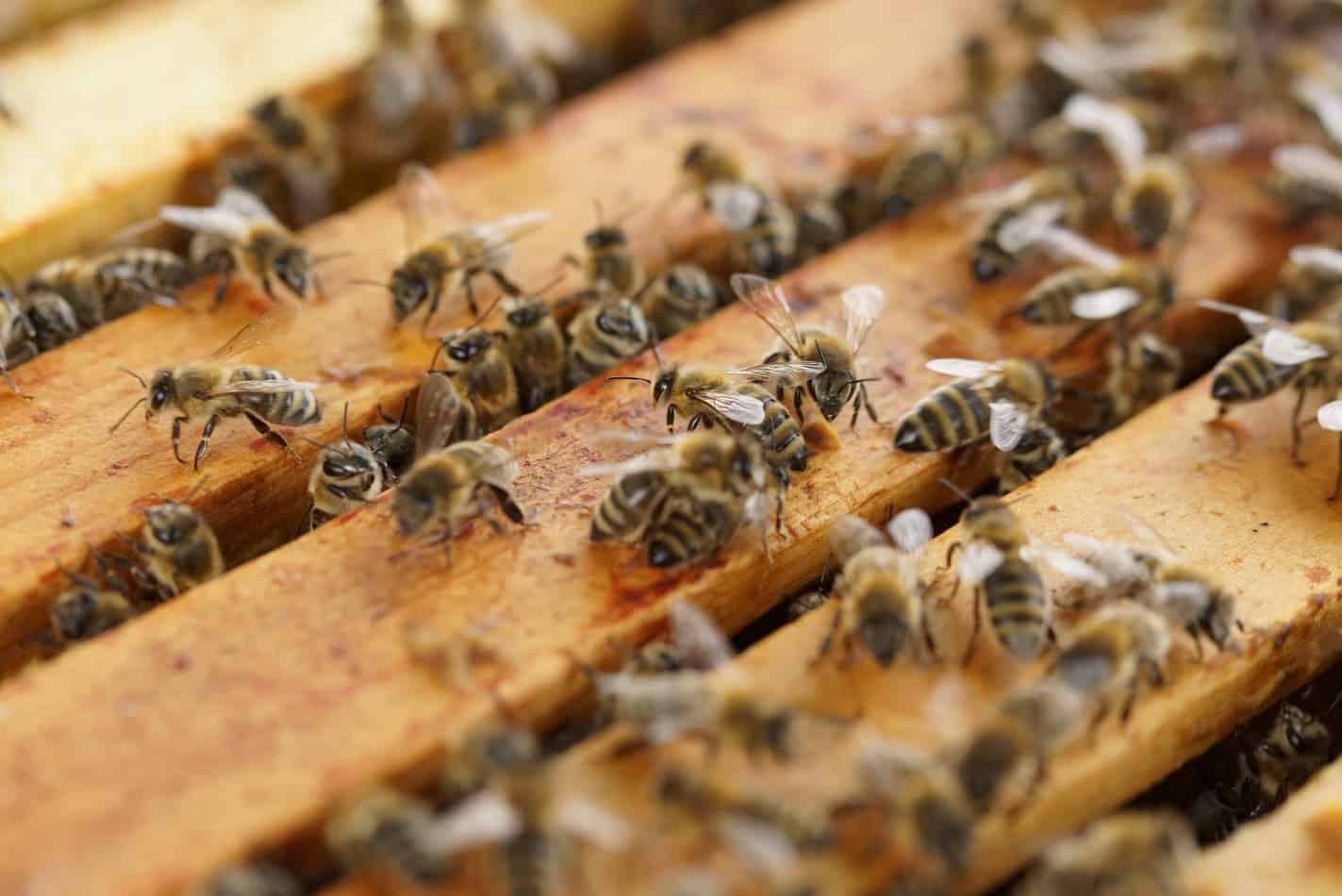
That is funny, because I have Saskatraz bees, they are not aggressive at all, and black in color. Production wise they were not able to bring a lot of honey. One thing about them is that they swarm a lot. My hive has like 6 swarm cells present, and I dont like that. I was wondering how to stop that and whether it is the trait of Saskatraz bee?
Hey Daniel. Thanks for commenting on our site. Our Saskatraz bees had Italian workers with our original package that we installed. As the brood grew up and took over the hive the bees took on a slightly darker appearance. They look like an Italian and Russian bee mix. Our honey production was out of control. I am not sure why, but they are on target to be good honey producers again this year. I already have a medium, and a deep super full of capped honey.
I was warned about the swarming of the Saskatraz. Upon inspection they have created some queen cells, but they seem to focus more on production. I try to give them plenty of room to grow. I have also needed to increase my inspections. I would generally inspect hives with deep supers every 11-14 days, but I have increased my inspections to weekly. The Saskatraz bees are right next to a Russian hive, and they are outperforming the Russians by about 35-40%.
How long have you had the Saskatraz bees?
We are in the process of editing a video of our installation, first inspection, and our latest inspection of the Saskatraz hives. I wonder how our compare to yours.
I have appreciated your insights of working with the Saskatraz bees. I am a long time hobby beekeeper who purhucased two new colonies this past spring and who both went queenless, so I purchasesd Saskatraz queens to head the two colonies. I was looking for honey bees that could survive our N.D. winters where last winter we had a minus 30 degrees below zero for almost the entire month of January , which killed off the two colonies that I had.. So I am hoping that the Saskatraz bees can endure our harsh winters. I wrap and insulate the colonies for the winter but they still freeze out. Moisture within the colony is not the problem.
Thank you for your information. I can keep you post as to how the Saskatraz colony does in our location. Thank you.
Thanks for commenting on our site. We live in a mountain valley and get cold air inversions which results in low temperatures and bad air pollution. We have had similar issues to loss of the colonies over the winter. I often think it was the effects of varroa mites and health issues that they bring more than the cold temperatures. We tried Russian bees and they did better than Italian and Carniolan bees, but it was hit and miss. We have only had the Saskatraz for one full year and are going into our next year. I have been very impressed with the difference I see in comparison to other bee breeds. I am hopeful that the Saskatraz breed will hold up to the wintering stress, and the health issues with varroa mites. I have roughed up the sides of the supers to encourage propolis production. I read some research as to the health benefits of propolis. I even have an article on our site about that. I have noticed the Saskatraz bees do produce a lot more propolis than other breeds.
I hope the Saskatraz breed does well for you. I am working on a wintering over beehives article. There is some interesting research out there about wintering beehives. A lot of information contradicts other ideas. For me it seems that a wind break is important, and I have two deep supers for the hive itself and a medium super full of honey for winter. I will also build a candy-board and install it as well as a pollen patty at the end of October or in November just to shore up winter reserves. This has resulted in a hit and miss survival. I hope the Saskatraz will be a good strong breed for you. Like I said I am currently researching more about wintering beehives. Maybe that article will give some more ideas to try.
Thank you for reading our articles and commenting.
Thank you for your return message concerning your Saskatraz bees and your hive management suggestions.
My colonies here are facing south-east protected by a 6 foot wooden fence to the north-west and on the north-east and south west.. Above the colonies is a hill planted with Pondrosa pine, rocky-mountain junipers, and blue spruce as a wind break for for our school and rectory plus the bee colonies.
To enter the colonies they are wrapped firs allied to the hive are I/4 inch laths as air spacers a, next come 2 inches of aluminum faced steriofoam insulation. and final a layer of black tar paper. On top of the colony is a supper filled with course pine shaving as a vet supper, which keep the colony moisture free.. And still the colony dies. For this coming winter I am thinking of moving the colonies inot the machine shed for further protection. . However at 79 years of age that will be a real challenge.
Last week whenI worked the first colony that was requeened with a Saskatraz queen about four weeks ago the bees were very quiet in th the bees never left the comb..Truellly amazing.
I hope there are not to many errors in may typing becasue I cannot see the red print on a blue background. Sorry!
Thank yuou for your sharing. Until we meet again.
A fellow bee hime there was no buzzing only a quiet low hum and the bees never left the comb.
I am sorry for any spelling errors in Theo sharing. I conot read the red print on the blue back-ground
A fell bee fancier,Brother George Maufort, S.D.S.
Thank you for your return message concerning your Saskatraz bees and your hive management suggestions.
My colonies here are facing south-east protected by a 6 foot wooden fence to the north-west and on the north-east and south west.. Above the colonies is a hill planted with Pondrosa pine, rocky-mountain junipers, and blue spruce as a wind break for for our school and rectory plus the bee colonies.
To enter the colonies they are wrapped firs allied to the hive are I/4 inch laths as air spacers a, next come 2 inches of aluminum faced steriofoam insulation. and final a layer of black tar paper. On top of the colony is a supper filled with course pine shaving as a vet supper, which keep the colony moisture free.. And still the colony dies. For this coming winter I am thinking of moving the colonies inot the machine shed for further protection. . However at 79 years of age that will be a real challenge.
Last week whenI worked the first colony that was requeened with a Saskatraz queen about four weeks ago the bees were very quiet in th the bees never left the comb..Truellly amazing.
I hope there are not to many errors in may typing becasue I cannot see the red print on a blue background. Sorry!
Thank yuou for your sharing. Until we meet again.
A fellow bee hime there was no buzzing only a quiet low hum and the bees never left the comb.
I am sorry for any spelling errors in Theo sharing. I conot read the red print on the blue back-ground
A fell bee fancier,Brother George Maufort, S.D.S.
Hey Brother Maufort. We are new to blog design. We have tried to fix the design of the site, and the comments are really difficult to see. We will do our best to remedy this, but it may take a little while. It sure sounds like you are well prepared for the winter. I have researched that often times Varroa mites do some of their most damage during the cold where the bees are close together and are not moving around much. The mites can jump from bee to bee doing damage and infecting with viruses and bacteria as they go. The Saskatraz breed hopefully are more hygienic and groom the mites off. The legs of the Saskatraz are a bit longer and they are able to reach areas of their bodies better than shorter legged breeds. I have used different treatments for varroa in the past and the treatment really seemed to harm the colony. I haven’t done any vary treatment with the Saskatraz bees and they seem to be doing well. The only issue I would see being a problem with moving them int a shed is the occasional cleansing flights available when the temperature warms. I hope the Saskatraz may be an answer to a fellow bee fancier like it seems to be with us.